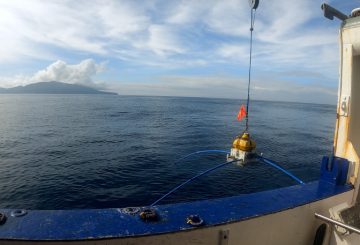Sinabi ng Climate Change Commission na kailangang ihinto ng New Zealand ang pag-import ng mga kotse sa petrol sa 2040 upang matugunan ang isang bagong target na mabawasan ang mga emisyon ng Greenhouse gas sa ilalim ng 27 milyong tonelada bawat taon. Naniniwala ang komisyon na dapat dagdagan ng New Zealand ang target nito sa klima sa 2050, dahil ang kasalukuyang pagsisikap ng bansa ay hindi natutugunan ang mga pamantayan sa internasyonal
Iminungkahi din ng komisyon na dapat isama ng New Zealand ang mga emisyon ng Greenhouse gas mula sa mga eroplano at barko na naglalakbay patungo at mula sa bansa sa mga target nito sa klima. Ang mga emisyon na ito ay nagkakahalaga ng 9% ng kabuuang bansa noong 2019, ngunit hindi kasalukuyang binibilang dahil sa isang karaniwang loophole.
Iminungkahi ng komisyon ang isang bagong limit ng emisyon para sa 2036-2040, na nangangailangan ng halos lahat ng bagong pag-import ng kotse na maging kuryente sa 2035 at 13% ng mga biyahe sa regional plane na maging kuryente sa 2040. Inaasahan din ng komisyon na ang produksyon ng gatas ay mananatili sa kasalukuyang antas, ngunit may mas kaunting baka at paglipat mula sa pagsasaka ng gatas patungo sa hortikultura.
Naniniwala ang komisyon na ang pagtugon sa iminungkahing badyet nito ay makakabuo ng mas maraming mga benepisyo sa ekonomiya kaysa sa hindi pagkilos, na may pinahusay na kalidad ng hangin lamang na makatipid ng $2.7 bilyon Ang kasalukuyang target sa 2050 ay para sa net zero carbon dioxide at nitrous oxide emissions, at isang 24-47% na pagbawas sa mga emisyon ng methyl kumpara sa mga antas ng 2017.
Ang komisyon ay naghahanap ng feedback ng publiko sa mga panukalang ito bago gumawa ng mga pangwakas na rekomendasyon sa gobyerno. Nais din ng komisyon na higpit ang mga badyet ng emisyon ng bansa para sa susunod na dekada upang matiyak na ang tunay na pag-unlad ay ginawa sa pagbawas ng mga emisyon.
Iminumungkahi ng draft analysis ng komisyon na, hindi kasama ang methyl mula sa mga hayop sa bukid, ang New Zealand ay maaaring maging carbon neutral sa paligid ng 2040. Inaasahang magpatuloy na lumalaki ang ekonomiya sa buong paglipat sa mas mababang emisyon ng carbon. Ang mga panukala ng komisyon ay bukas para sa mga pampublikong pagsusumite hanggang Mayo 31, at ibibigay nito ang mga pangwakas na rekomendasyon nito sa gobyerno sa pagtatapos ng taon.




























































